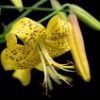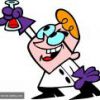 4
42) Which of the following carbocations are formed during the formation of given products.
CH3----CH CH----CH
CH----CH CH2 --HCL---->
CH2 --HCL---->
CH3--CH2---CH CH--CH2---cL + CH3---CH(cL)----CH
CH--CH2---cL + CH3---CH(cL)----CH CH----CH3
CH----CH3
(A) CH3---CH2----CH+---CH CH2
CH2
(B) CH3 --- CH2--CH CH---CH2+
CH---CH2+
(C) CH3---CH CH---CH+---CH3
CH---CH+---CH3
(D) CH3----CH CH---CH2---CH3+
CH---CH2---CH3+
 4
4Compound (x) C3H6O decolourises Br water , with dil H2So4it undergoes hydrolysis to give (y) and (z). The correct statements are :
(A) (x) is an ether (b) (X) is an alkene
(C) (X) is cyclic compound (d) Both y and z are carbonyl compounds
 4
4ALL THE ABV R MULTI ANS TYPE
 11
11Ans 1) b, c (NOT SURE) ????????
 13
131)Electrochem. no idea
2)AC
3)AB
 4
4ANS GIVEN
1) A B D
( But I got B D)
2) A B C
( I want the mechanism)
3) a b
(But how??? I want explanation)
 13
133) Hydrolysis gives 2 products, matlab it is an ether, tht too non-cyclic.
As, there is 1 degree unsturation, & it is declourising Br2 water, a double bond is present.
So, X will be.... CH2=CH-O-CH3.
Y & Z are- CH3-CHO & CH3-OH.
Hence, only A & B are rite.....
 CH----CH
CH----CH CH2 --HCL---->
CH2 --HCL----> CH--CH2---cL + CH3---CH(cL)----CH
CH--CH2---cL + CH3---CH(cL)----CH CH----CH3
CH----CH3 CH2
CH2 CH---CH2+
CH---CH2+ CH---CH+---CH3
CH---CH+---CH3 CH---CH2---CH3+
CH---CH2---CH3+